Welcome to Wild Notes, my monthly letter to everyone following Wild Revival. I’m Jo, a forager and creative who finds both relief and inspiration in Nature, and this publication is where I share my seasonal noticings and plant wisdom with you. Think of it as a gentle prompt to get outside and interact with Nature in a way that feels nourishing to you. I’m so glad you’re here!

Hello Wild Ones,
We have skipped into march ahead of strong winds at our backs, and I feel as though I’ve been not-so-gently pushed into the seasonal shift! How have you landed in March? Perhaps you haven’t yet. All over the world we are seeing wind phenomenon, cyclones, storms, and I feel it’s an apt metaphor for my life right now. How about you?
I’ve been in my cold-climate habitual state of longing for sun the last couple of weeks. It is so easy to rush ahead in our thoughts, plans and wishes, and forget that everything happens in it’s own time. We forget to be present. I remembered this week that I set an intention for the year, which is ‘to savour the seasons’ and to me this means catching myself when I start daydreaming about sunshine and warmth and longer days. Turning from my inward images of Summer and seeing what I can find, right now, to delight in.
Things might be different where you live; perhaps you are heading into Autumn and can look out for seeds ripening, maybe you still have weeks of snow ahead before the thaw in your landscape and can look to the trees and birds for joy, or perhaps you’re closer to the Equator and the Daffodils are already in full swing! Embrace the season exactly where you are, right now.
Signs of Spring
Here are my favourite signs of Spring to look out for. Spotting these and spending time with them helps me to ground into the present moment, and they become rituals in themselves, an anchor point for the time of year.
Wild Primroses
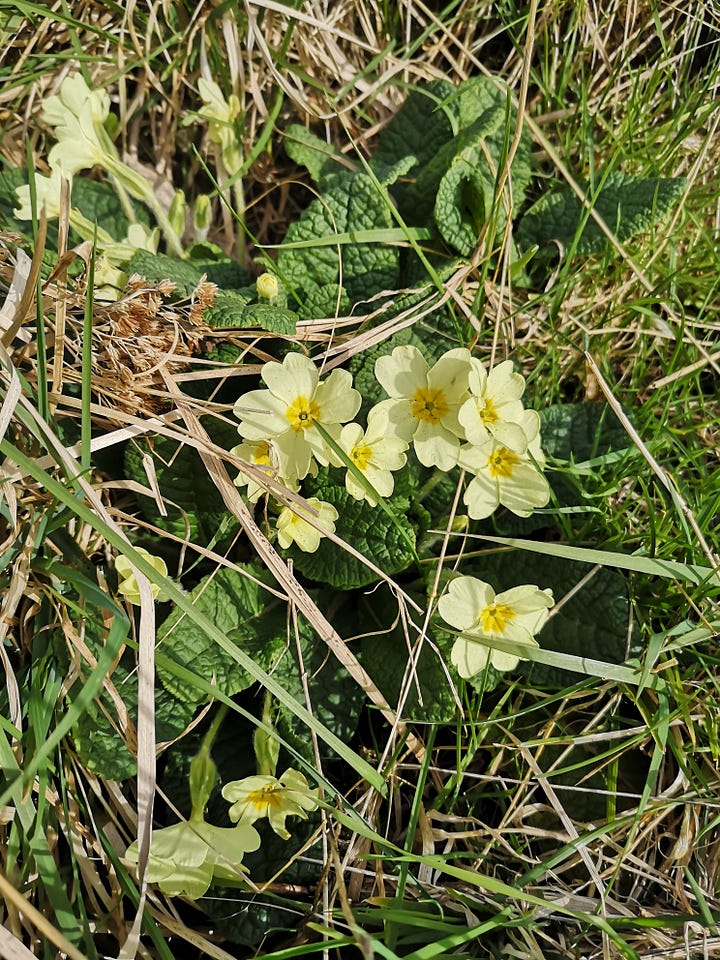
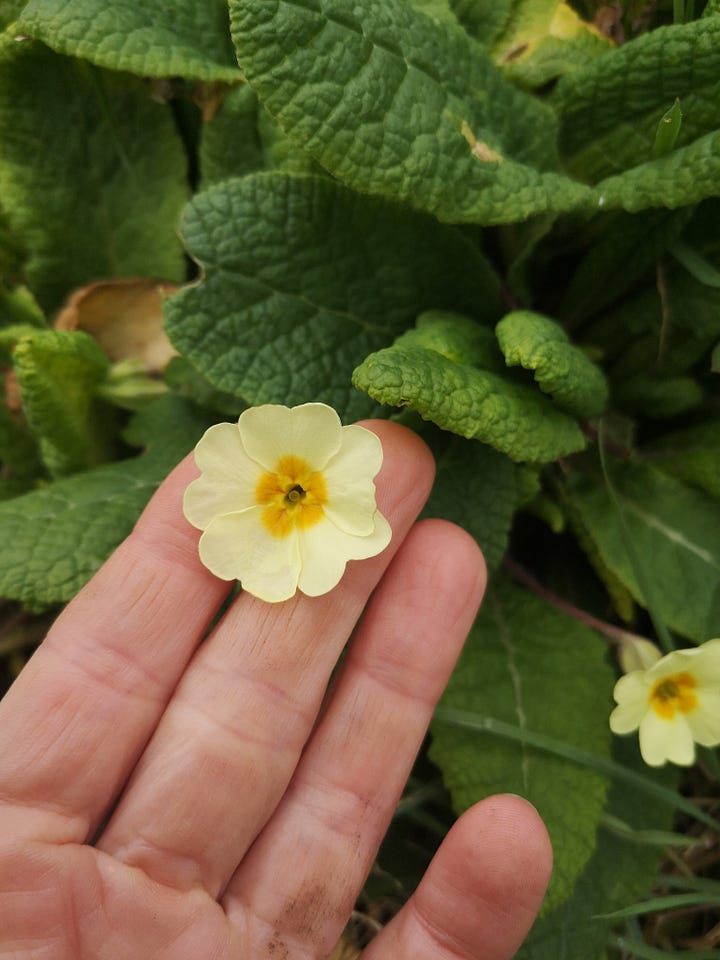
I adore these tiny, delicate flowers; butter-yellow with darker yolk-like centres. The petals are softly heart shaped and the distinctive leaves stand out for identification, being crinkled and textured amongst the grass of the verge or bank. Primroses have edible flowers and leaves, though you shouldn’t pick them unless they are in your own garden or growing prolifically, as their natural habitat is threatened. One flower from each clump is safe and gentle and leaves plenty for the pollinators. They have a delicious and delicate peppery note.
Catkins

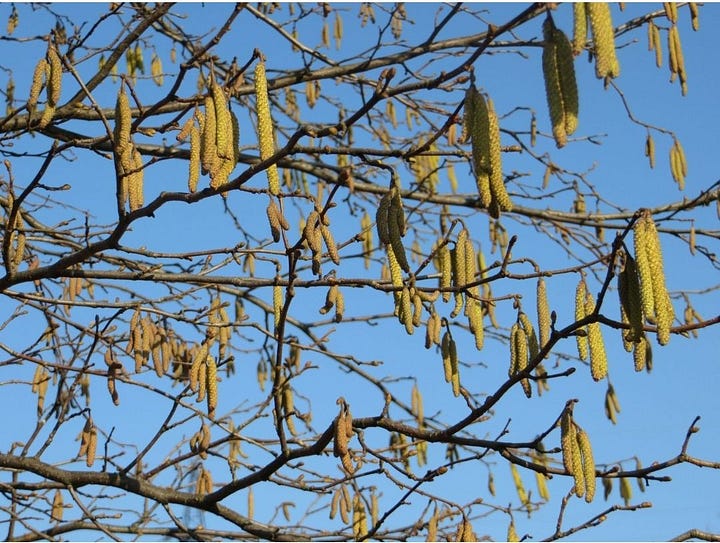
Catkins are found on two trees at this time of year; Alder is on the left (or above if you’re reading on your phone!) and Hazel is pictured on the right (or below). They are the male flowers of the plants, containing the pollen for reproduction. On a still, sunny day you can gently flick or tap one branch and watch the pollen cloud drift! Catkins are edible too, though I haven’t tried them yet. You can tell the Alders by noticing tiny little cones on the branches.
Dandelions and Celandines
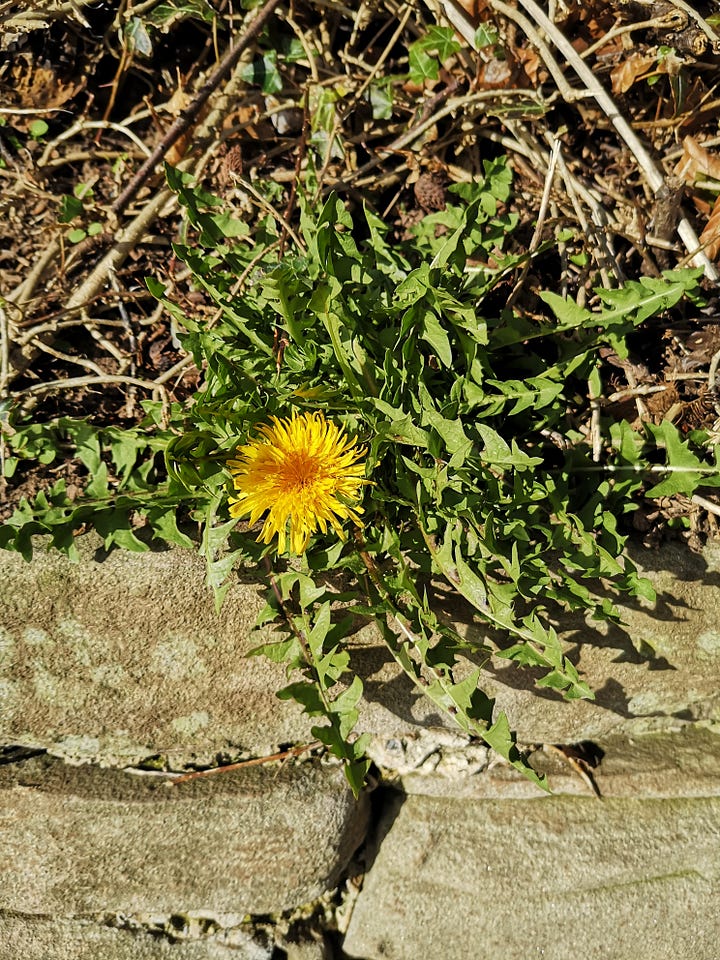
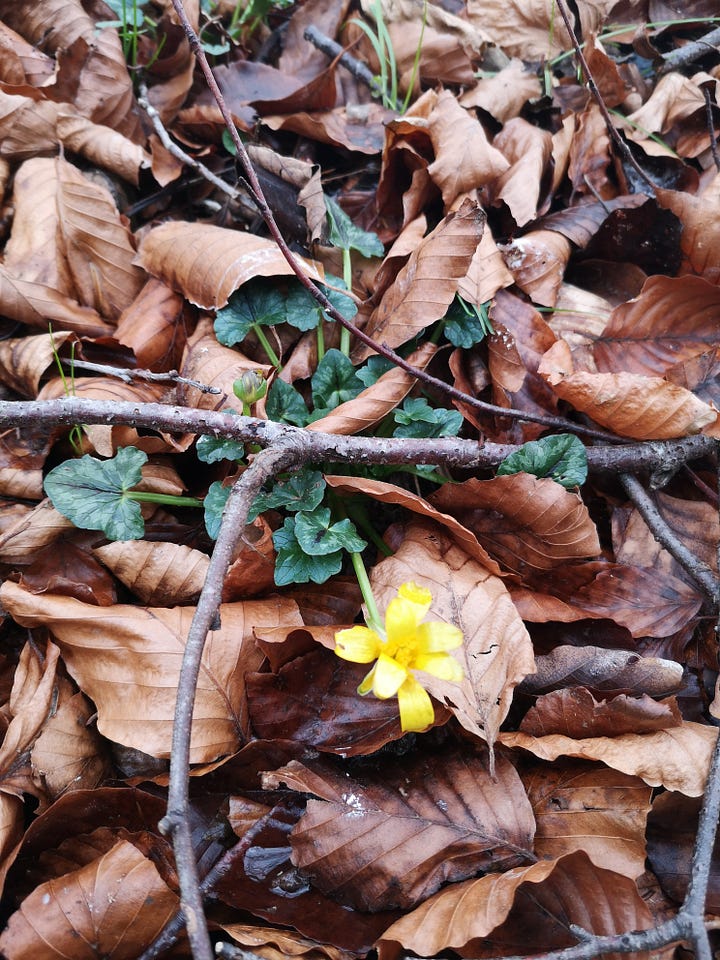
I love a yellow flower, the colour is so cheering and joyful. Dandelion on the left (above) here is well-known to most people with it’s jaggedly toothed leaves and pom-pom flowers. On the right (or below) here is a little Celandine, which grow in clumps in woodlands, fields, verges and on banks. The yellow flowers are open and simple, and the leaves are mottled silver, heart-shaped and look distinctly bluer-green in hue than the other green leaves that grow near them. Read more about Celandines here via the Woodland trust website.
Pussy Willow

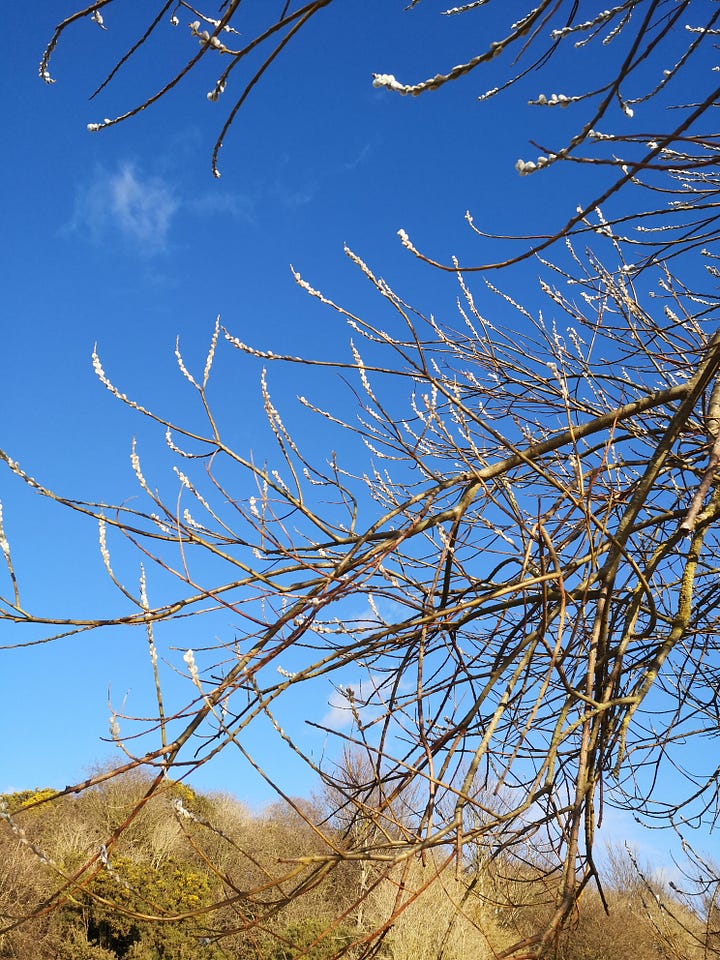
The flowers of the Willow trees, here on a Goat Willow. Not every species of Willow develops such large, lovely silver bunny-tails, but there are plenty to spot in the wild. These are lovely to pick and dry inside, displaying them in a vase with no water, and they will last all year round. Pick them before the silver down turns yellow with a pollen haze so they will last longer and not drop their little tails, or enjoy them on the plant. I love to stroke these on my face and my youngest son collects them as precious treasures!
Wild Leeks emerging
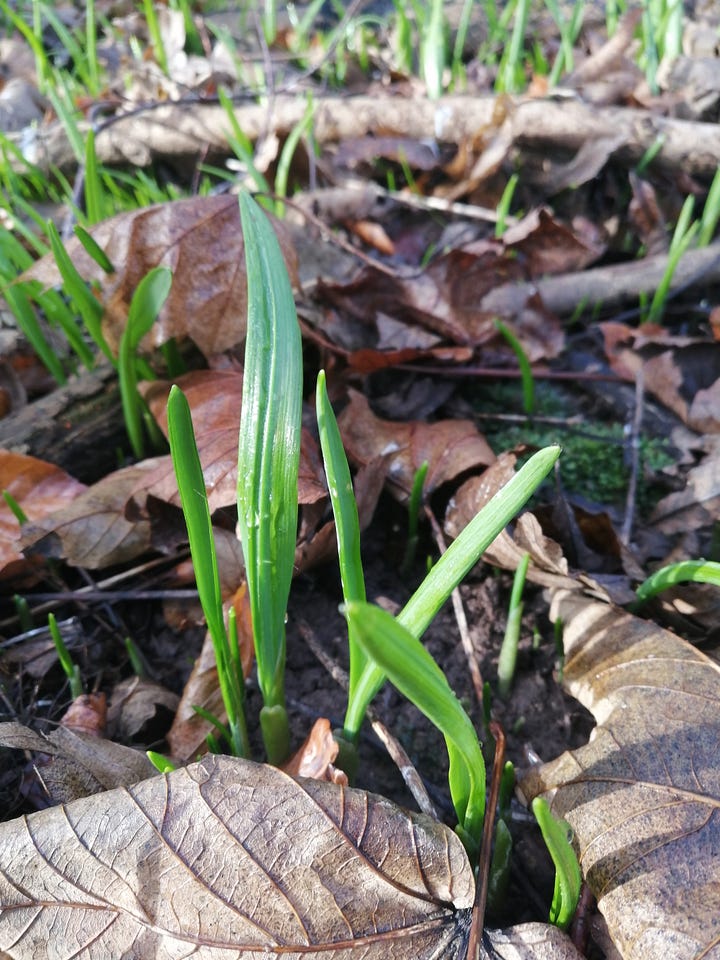
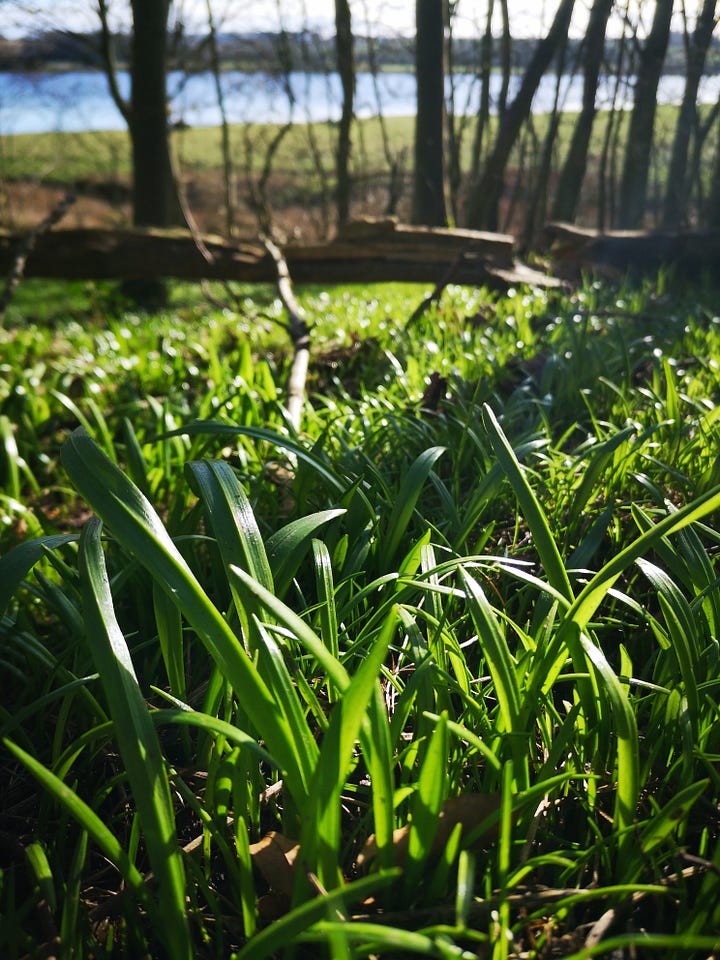
Finally, I feel like Winter shakes off it’s cloak when I see the Wild Leeks starting to push up. These are called Few-flowered Leeks (Allium paradoxum) and they are in the onion family, related to Wild Garlic but come into leaf earlier. I see them as an extension of the Wild Garlic season and I love to pick and eat them freely as they are an invasive and easily-spreading plant. I make soup, pesto, scones from them and use them in anything like spring onions - omelettes, stir fries, everything! You can pick the leaves only, or if they grow in your garden, uproot the whole plant and wash them thoroughly, using the green and white parts. The flowers are also edible when they come and make a lovely garnish. The smell of my local woods transformed into a garlic-scented haven means Spring to me.
What’s On
Wild Hygge is our monthly gathering where we step away from the noise, sink into the seasons, and reconnect with nature—and ourselves. The next session is on Sunday 16th March at 2-4pm and we will be really celebrating the signs of Spring!
Imagine… gathering around the fire with like-minded folks; soaking in the stillness of trees; sipping foraged herbal tea and letting the wild IN; moving your hands and engaging in Nature with simple activities that bring a sense of calm. This is Wild Hygge!
Book you place now - email me at woodland-jo@outlook.com. Exchange is £12, includes all materials and refreshments, concessions available and all welcome.
Thankyou for being here, comment below and let me know what your favourite signs of Spring are!
See you outside!
Jo xxx


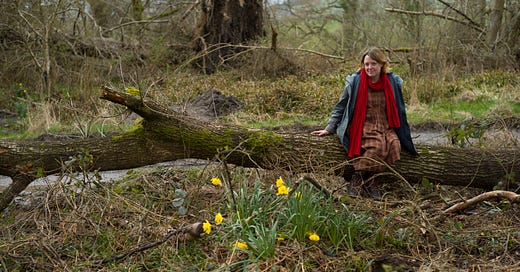




I had no idea primroses are edible!
The spring flowers seem to have been in abundance this year which has been lovely! 🙏❤️
Primroses are my absolute favourite and we have a few clusters that sprout up in our garden every year! I adore!! I feel like I’ve just about landed into March now… the sunshine helps!! X